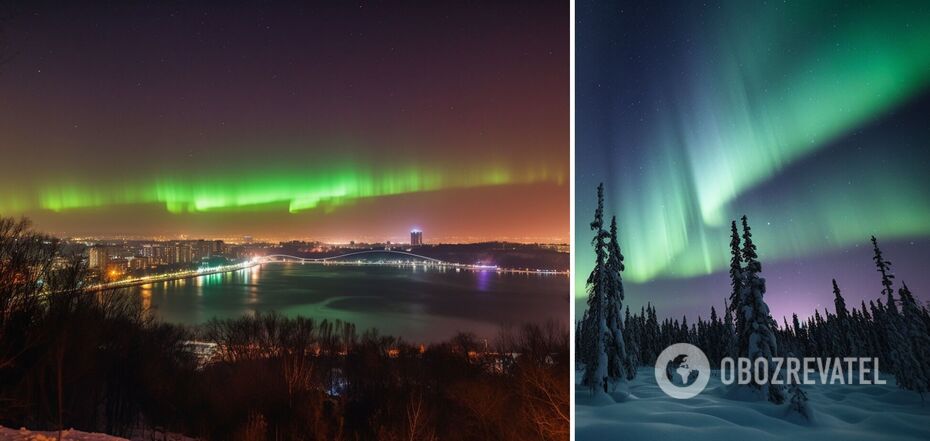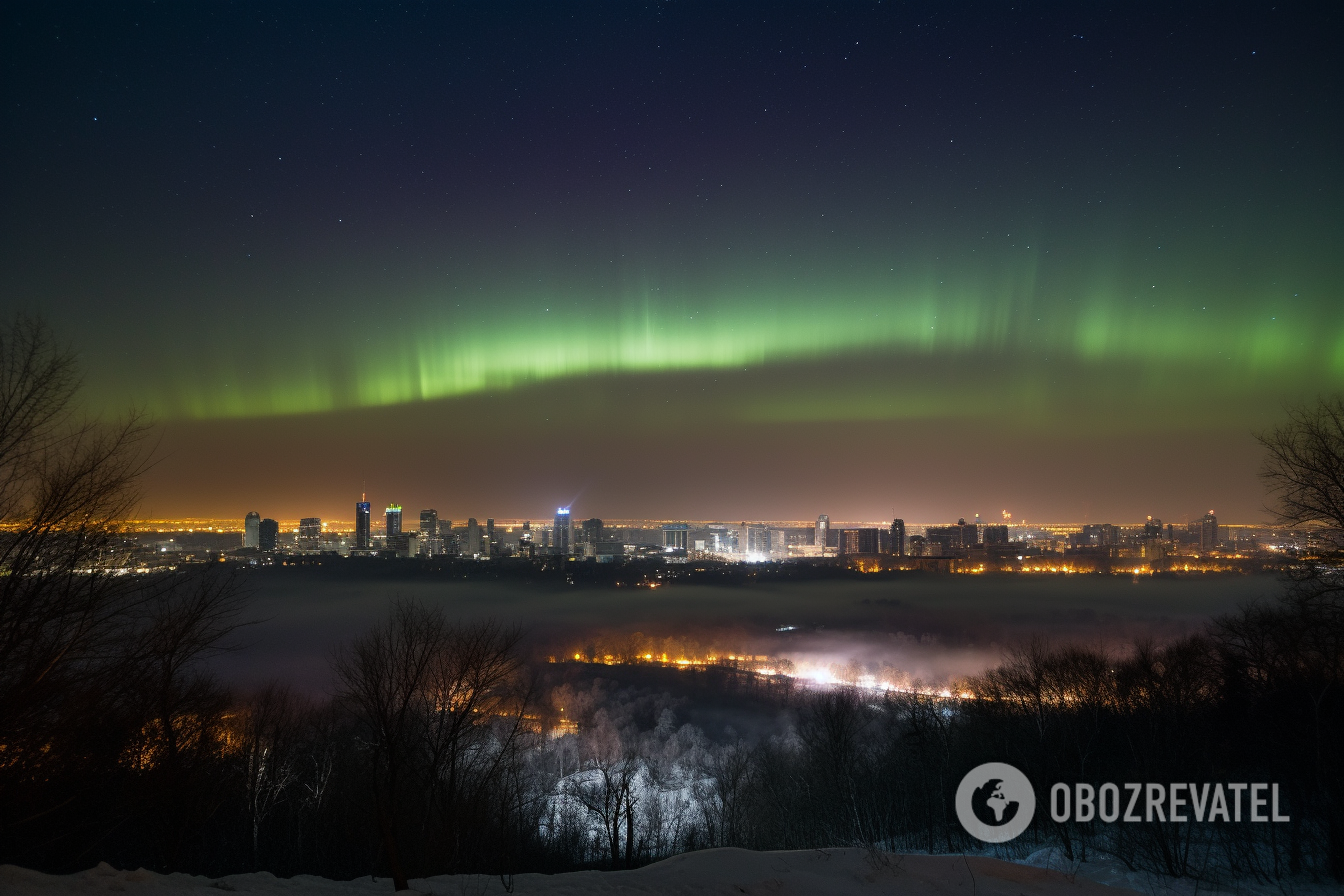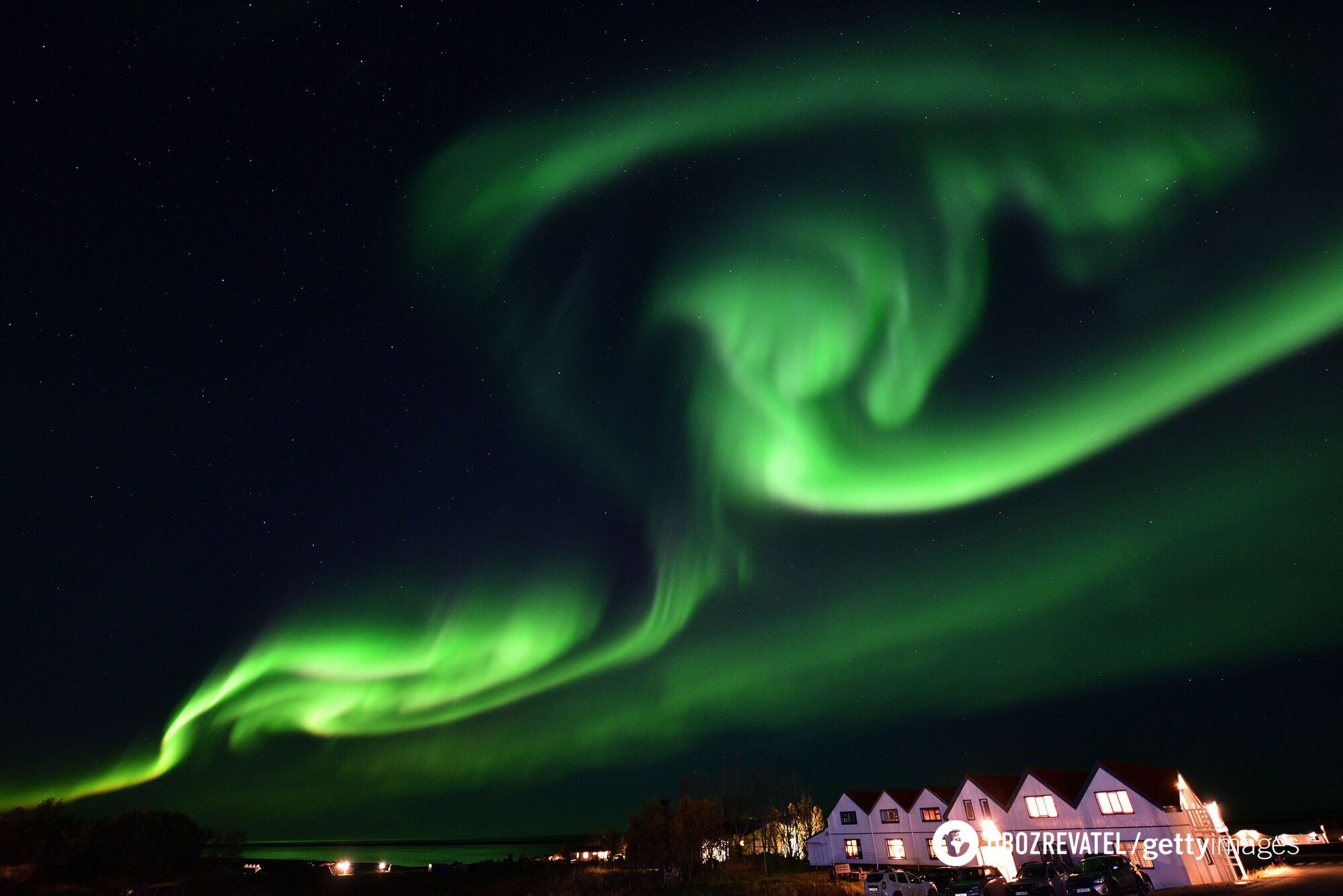Life
Sun's war against humans: why the northern lights appear and how they were painted 30,000 years ago
On the evening of Sunday, April 23, Ukrainians were amazed by a cosmic spectacle rarely seen in our country. The bright lights of the Northern Lights (or Aurora Borealis in Latin) painted the sky with green, pink and red colours in completely different parts of the country.
The celestial spectacle didn't last long, and many people managed to see it only thanks to hundreds of Ukrainians who posted their photos of the northern lights online.
OBOZREVATEL talks about the nature of this phenomenon, how it was first depicted in history 30,000 years ago and what it means in myths.
What is the northern lights and how does it appear
The Northern Lights are incredibly spectacular, dancing waves of coloured light. Despite the fact that from the ground they look like something fragile, it is actually a very violent event that takes place at an altitude of 100 to 300 kilometres, but sometimes up to almost 1,000 km.
The primary cause of the aurora is solar storms, which send energy-rich solar particles (the so-called solar wind) towards the Earth. They reach a speed of about 72 million kilometres per hour and crash into the ionosphere, or the upper layers of the Earth's atmosphere.
Fortunately, such solar bombardment is painless for people, as we are protected from the "attack" of these charged particles by a magnetic field that directs them towards the poles.
It is when they are redirected to the poles that solar particles accumulate energy, creating an incredibly bright spectacle.
The colours that form the aurora depend on which components of the Earth's atmosphere the solar wind interacts with and at what altitude.
The dominant red and green are produced by nitrogen and oxygen molecules, respectively. They can also form other colour variations, depending on the altitude of the action: from blue to pink and purple.
"Each type of atom or molecule, whether it's atomic hydrogen or a carbon dioxide molecule, absorbs and emits its own unique set of colours, which is similar to the way each person has a unique set of fingerprints," explained Billy Teets, astronomer and director of the Dyer Observatory at Vanderbilt University (USA).
The shape of the northern lights in the sky depends on the shape of the magnetic field lines and the location of the observer. Most often, the aurora looks like curtains stretching from east to west.
If the observer is located to the south of the aurora, it will be near the horizon line and be ray-like, and the further north the observer is, the more of the sky will be covered by the aurora.
The northern lights can be static for many hours or change rapidly.
The brightness of the aurora varies from a subtle glow to enough illumination to read a newspaper in the middle of the night, but the aurora is never strong enough to be seen when the sun is rising.
According to the US National Oceanic and Atmospheric Administration (NOAA), our star is currently in its 25th solar cycle, which is projected to peak in 2025. At this time, it will be possible to observe the most powerful lights.
In addition to the northern lights, there is also the southern light - Aurora Australis. They are of the same nature, but do not always appear simultaneously.
The first image of the northern lights
It is likely that even the most ancient ancestors of humans could observe the northern lights. However, the first image of the northern lights was discovered in a cave in modern France.
In a cave inhabited by Cro-Magnons 30,000 years ago, a strange rock painting was discovered that presumably depicts the ancient glow. Of course, scientists have different opinions about what exactly is depicted in the primitive drawing, but most agree that it is indeed the northern lights.
See for yourself.
The earliest reference to the northern lights is a Chinese record from 2600 BC.
"Fubao, the mother of the Yellow Emperor Huang Di, saw a strong lightning bolt moving around the star Su, which belongs to the Bei Dou constellation (the Chinese name for the Big Dipper), and light illuminated the entire area," the text reads.
The Northern Lights were also mentioned in the writings of early astronomers. In particular, the astronomer of the Babylonian king Nebuchadnezzar II described the phenomenon on a tablet dated 567 BC. It is also mentioned in a Chinese document from 193 BC.
The Northern Lights reappeared in 1570 AD. It was depicted in a drawing that showed candles burning above the clouds.
Surprisingly, the phenomenon had no commonly known name at the time, and it was only in 1619 that Galileo Galilei coined the term Aurora Borealis, which honoured two gods at once: the Roman goddess of dawn, Aurora, and the Greek god of the north wind, Boreus.
Galileo mistakenly believed that the northern lights were caused by the reflection of sunlight from the atmosphere.
In 1790, Henry Cavendish, an English physicist and chemist and member of the Royal Society of London, used the triangulation technique to determine that the northern lights were formed at an altitude of about 100-130 kilometres.
In the early 1900s, the Norwegian physicist Christian Birkeland tried to unravel the nature of the phenomenon by conducting an experiment and suggesting that the glow was caused by currents flowing through gas in the upper atmosphere. Birkeland never knew that he was absolutely right, as his theory was proven only in 1917, after his death.
(Un)aurora borealis
Since all that is needed for the northern lights to appear is a magnetic field and the solar wind, they can be observed on other planets in our solar system, and, according to astronomers, on exoplanets.
According to Jeff Regester, a physicist and astronomer from High Point University (USA), northern lights are often observed in the atmospheres of all gas giant planets, as these planets have powerful magnetic fields.
However, scientists have also observed the phenomenon on Venus and Mars, despite the fact that the magnetic fields of these planets are very weak.
The brightest northern lights in the solar system occur on Jupiter, where the magnetic field is 20,000 times stronger than the Earth's.
The aurorae on Jupiter are sometimes also caused not only by the solar wind, but also by particles ejected by its moon, Io, which is the most volcanically active body in the solar system.
Northern Lights in myths
The Vikings believed that the aurora was an earthly manifestation of their gods. According to legend, the armour of the Valkyries shone in the sky as they accompanied the warriors to Valhalla, where Odin, the chief god and ruler of Asgard, was waiting for them.
In Finland, the northern lights are called revontulet, which literally means "fire fox". It is believed to be caused by wild arctic foxes or foxes running so fast across the sky that they hit the mountains and create sparks that shine in the sky.
Where and how to see the northern lights
The best places to see the northern lights are in countries located in the northern latitudes at 67-70° (Ukraine is located between 52° and 44°).
These are Norway, where the northern lights are visible almost throughout the country; certain parts of Finland, Sweden, Scotland, Iceland and Canada. The light is also often visible in Alaska (USA).
Greenland is one of the best places to see it.
In fact, the northern lights happen all the time, because even a not-so-powerful solar wind can cause them. So the observer just has to be in the right place at the right time.
Most often, the northern lights are seen in the auroral zone, an area within a radius of approximately 2,500 kilometres from the North Pole.
You can see it with the naked eye, but it is advisable to stay away from city lights, which can dim the spectacle.
Earlier, OBOZREVATEL reported that you can see the glow on Earth from space. In February 2023, American astronaut Josh Cassada posted this incredible photo taken from the ISS.
Subscribe to OBOZREVATEL's Telegram and Viber channels to keep up with the latest news.


































